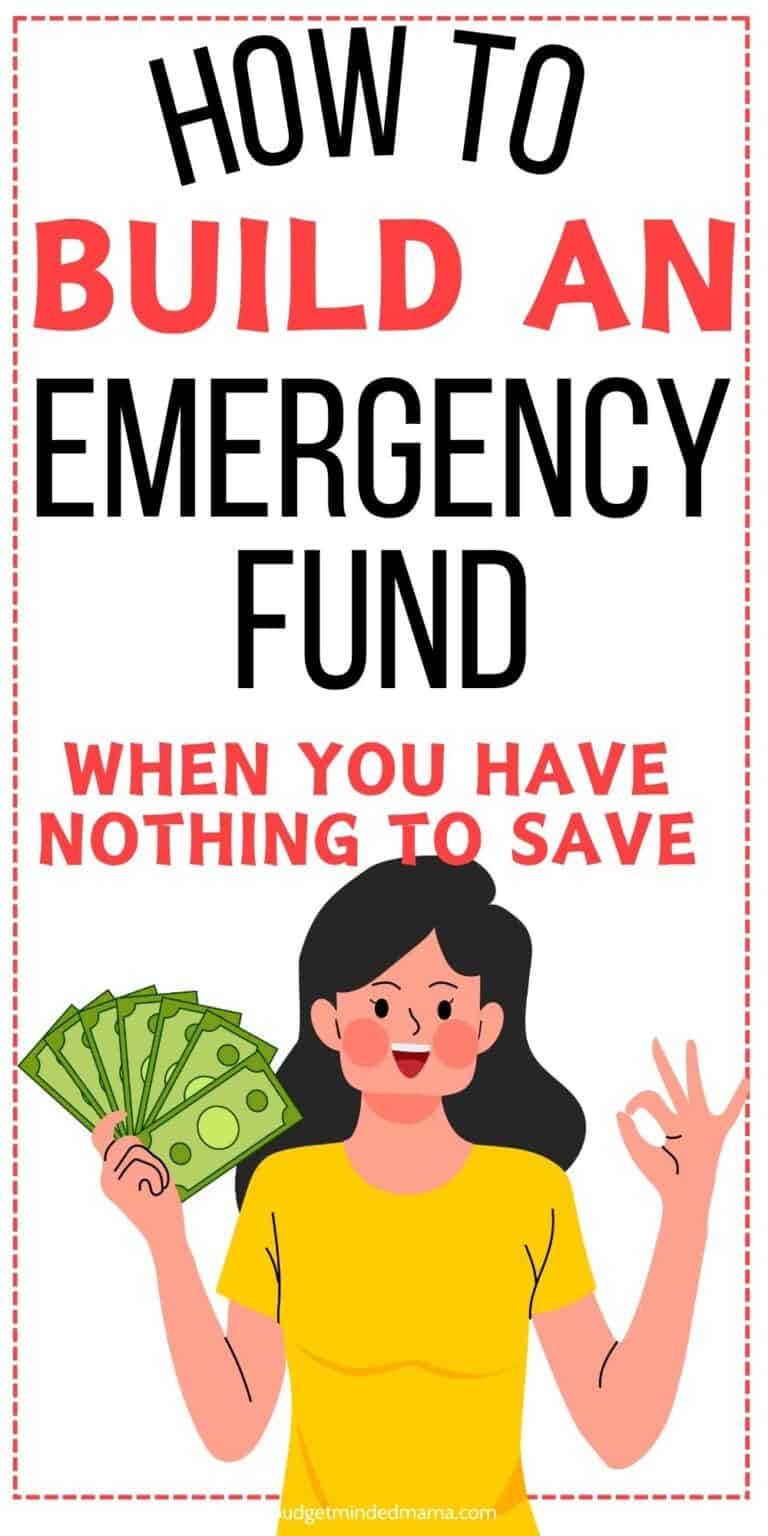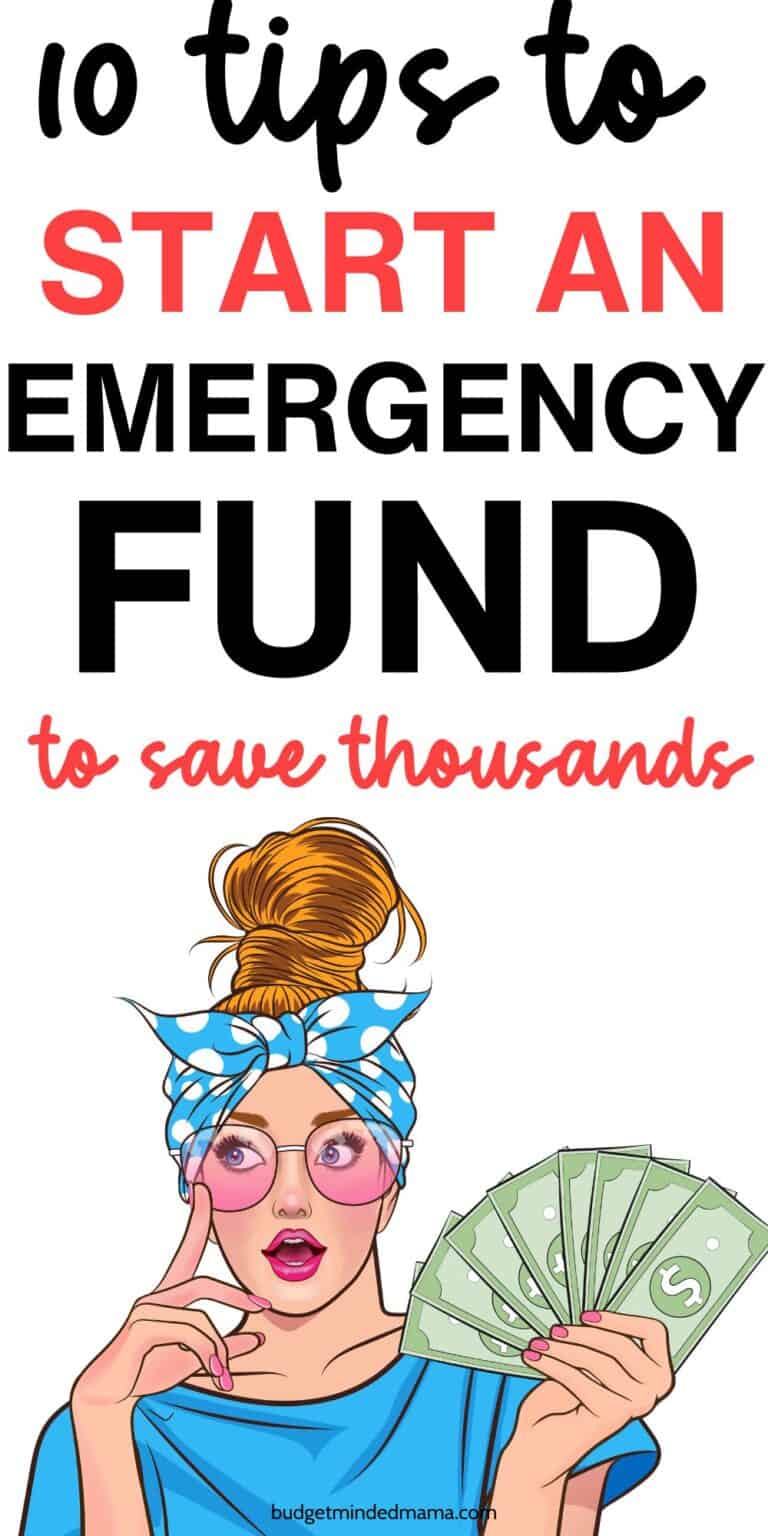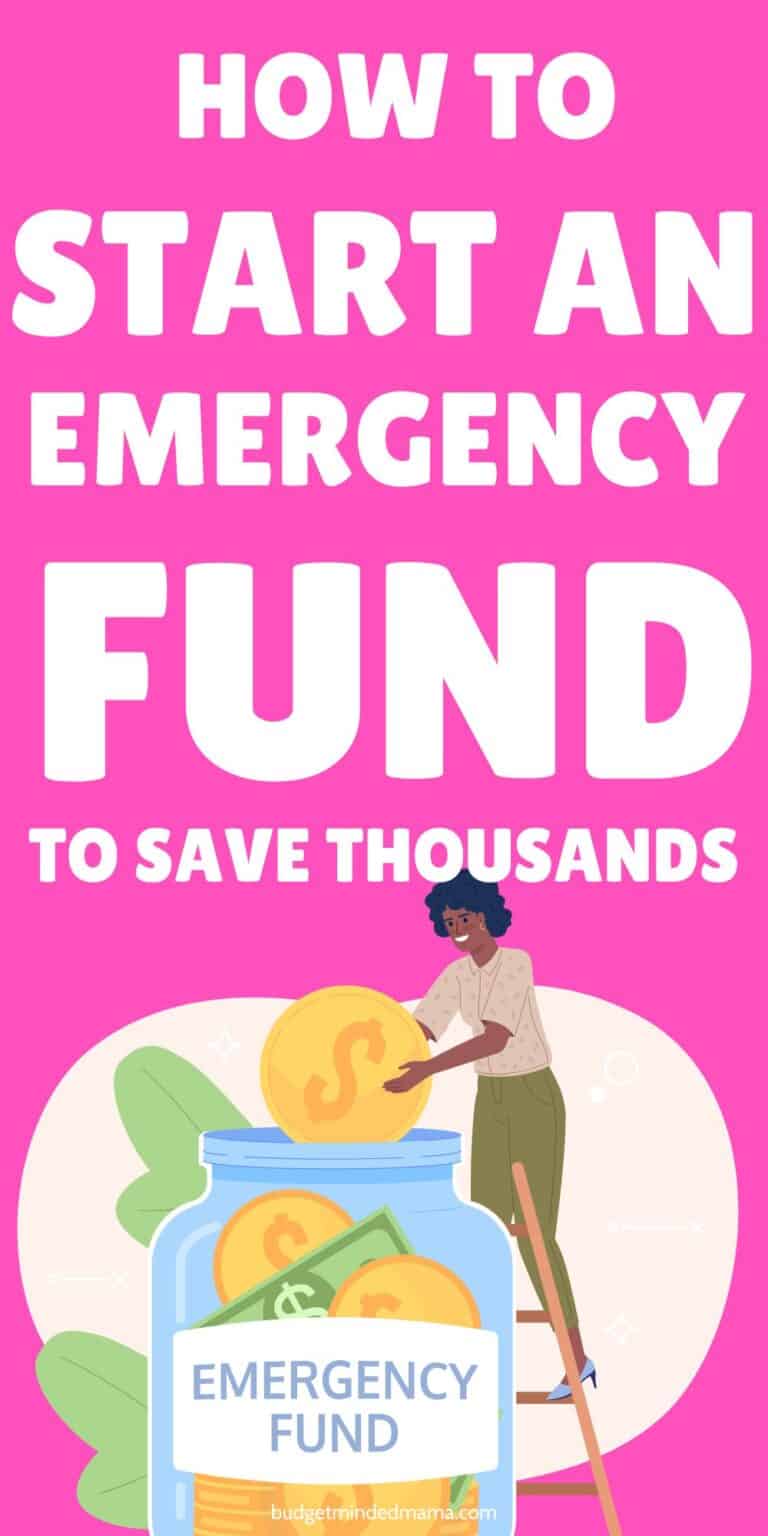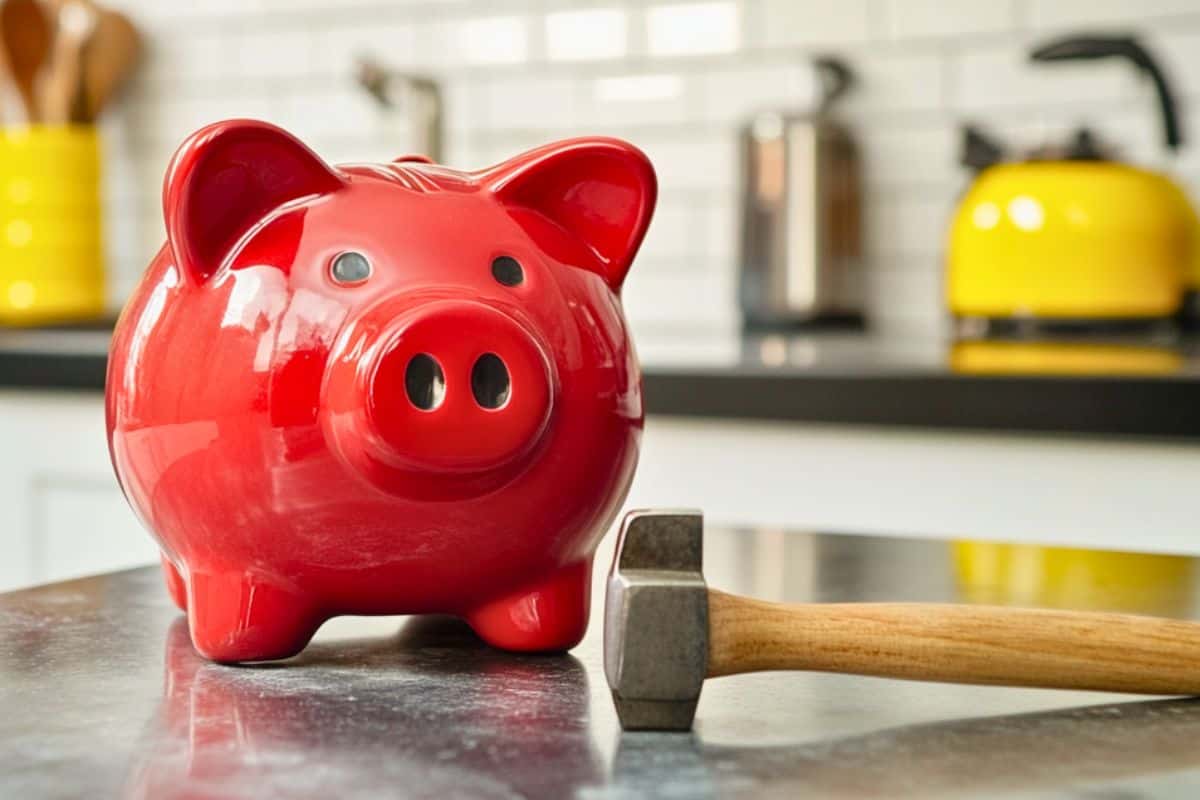I know saving money isn’t always the most exciting thing to do, but having an emergency fund is one of those “future you will thank you” moves.
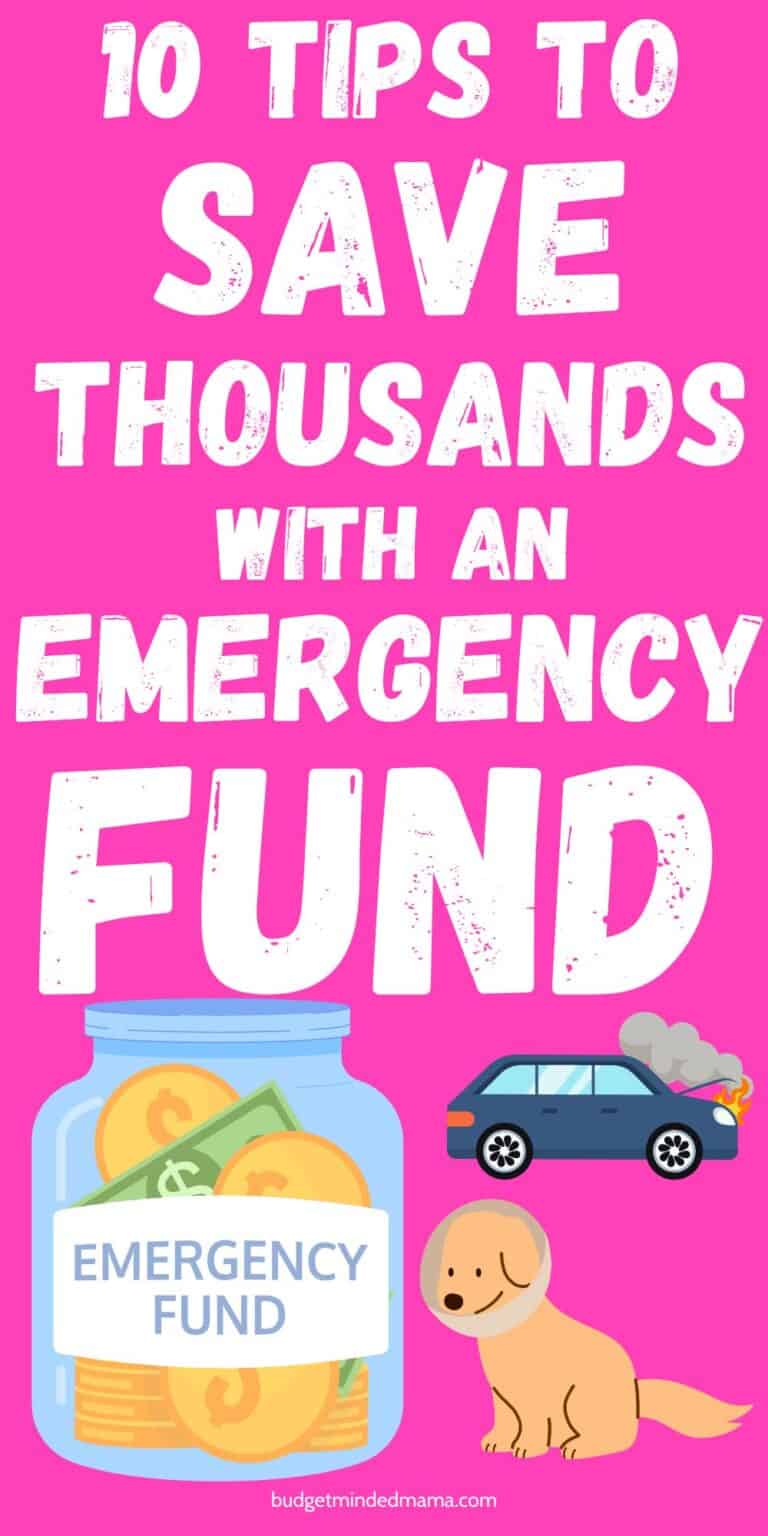
Life has a way of throwing surprises at us—car repairs, vet bills, or that random appliance deciding today is the day to stop working.
Instead of scrambling to cover the cost, an emergency fund gives you a little breathing room.
I get it, though—saving extra cash can feel impossible when there are already so many bills to juggle.
But you don’t have to build it overnight.
Small, consistent steps can add up faster than you think!
I’ve got some simple, doable ways to start stacking that emergency fund without feeling like you’re giving up everything fun.
Emergency Fund Savings Plan

Saving for an emergency fund doesn’t have to be overwhelming!
These simple, practical tips will help you set a goal, track your progress, and build your savings little by little—without feeling like you’re giving up everything fun.
1. Set a Realistic Emergency Fund Amount
Before you start saving, it helps to have a number in mind.
A good rule of thumb is to aim for three to six months’ worth of essential expenses, but that can feel like a huge number at first.
Instead of stressing over the big goal, start small—$500 or $1,000 is a solid first milestone.
This gives you a cushion for unexpected expenses while you work toward a larger amount.
The key is to set a goal that feels doable so you don’t give up before you even start.
2. Use an Emergency Fund Tracker
Watching your savings grow can be surprisingly motivating!
Whether you prefer a spreadsheet, an app, or a printable savings tracker, keeping tabs on your progress makes it easier to stay on track.
A simple visual—like a chart you color in as you save—can make a big difference in staying motivated.
Plus, tracking your emergency fund helps you see patterns in your saving habits and find ways to speed things up.
The more aware you are of your progress, the more likely you are to keep going.
3. Start an Emergency Fund Challenge

Turning saving into a challenge makes it way more fun.
Try a “$5 challenge” where you save every $5 bill you get, or go for a 52-week savings plan that gradually increases your contributions.
Another option is the “no-spend weekend” challenge—every time you skip eating out or impulse shopping, put that money into your emergency fund instead.
Even small wins add up over time.
The goal is to make saving feel like a game, not a chore.
4. Automate Your Savings
One of the easiest ways to build an emergency fund is to take the decision-making out of it.
Set up an automatic transfer to your savings account every payday, even if it’s just $10 or $20.
You won’t miss the money if you never see it sitting in your checking account.
Over time, those small amounts add up without you having to overthink it.
It’s like paying yourself first—future you will be grateful!
5. Cut Small Expenses That Add Up
You don’t have to give up everything fun to save money, but little swaps here and there can make a big difference.
Maybe it’s skipping one takeout order a week, canceling a subscription you barely use, or brewing coffee at home instead of grabbing one on the go.
Even setting aside just $5 a day adds up to $150 a month!
The goal isn’t to make life boring—it’s to be intentional about where your money goes so you can build that safety net faster.
6. Use Windfalls to Boost Your Fund

Tax refunds, birthday money, work bonuses—these unexpected chunks of cash are perfect for padding your emergency fund.
It’s tempting to spend extra money on something fun (and you totally can set a little aside for that!), but putting even half of it into savings can give you a big head start.
Think of it as fast-tracking your financial security.
Since it’s money you weren’t counting on in your budget, you won’t even feel the pinch.
7. Keep Your Emergency Fund Separate
If your emergency fund sits in your main checking account, it’s way too easy to “accidentally” dip into it for everyday spending.
Keeping it in a separate savings account—ideally one with a high interest rate—helps protect it from impulse purchases.
Some people even open an account at a different bank to make access a little less convenient.
The goal is to make sure your emergency fund is there when you actually need it, not just when something tempting pops up.
8. Start with a Starter Fund, Then Build Up
The idea of saving thousands of dollars can feel overwhelming, but you don’t have to do it all at once.
Start with a mini emergency fund—just enough to cover small unexpected expenses, like a flat tire or a surprise bill.
Once you hit that first milestone, you can shift your focus to building a bigger cushion.
Breaking it into smaller steps makes the whole process feel a lot more manageable.
9. Find Creative Ways to Save More
If cutting expenses isn’t enough, look for ways to bring in a little extra cash.
Selling things you don’t use anymore, picking up a side hustle, or even using cashback apps can give your emergency fund a boost.
Sometimes, it’s about getting creative—maybe you save every $1 bill or round up purchases to the nearest dollar and stash the difference.
The trick is to make saving money feel easy, not like a sacrifice.
10. Avoid Dipping Into It for Non-Emergencies
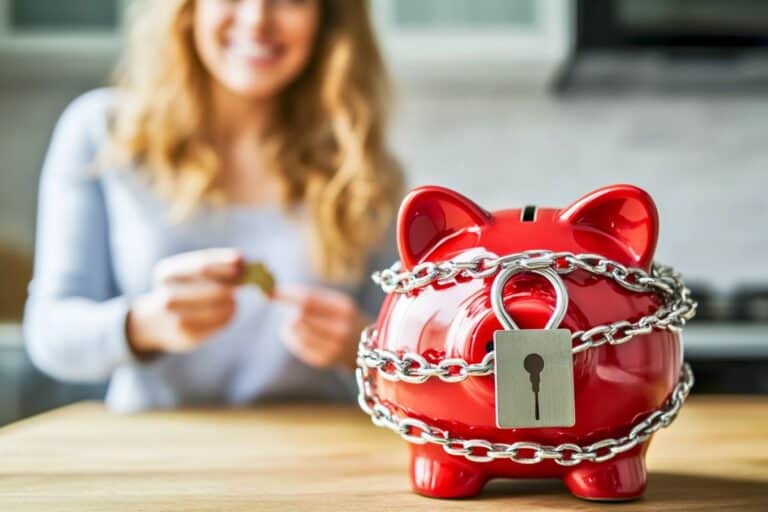
It’s called an emergency fund for a reason!
That new gadget, vacation, or holiday shopping spree doesn’t count.
Before pulling money from it, ask yourself: “Is this truly unexpected and necessary?”
If not, try to find another way to cover the cost.
The goal is to have this money ready when you actually need it, so it’s worth protecting.
A little discipline now means way less stress later!
Build Your Emergency Fund Savings, One Step at a Time
Saving for an emergency fund doesn’t have to feel impossible or overwhelming.
Small, consistent efforts add up, and before you know it, you’ll have a financial cushion that gives you peace of mind.
The key is to start where you are—set a goal, track your progress, and find ways to make saving feel doable.
Life will always have surprises, but having a little extra set aside means you’ll be ready for them.
No more scrambling, no more stress—just the confidence that you’ve got this covered.
So pick a tip (or two) and start today – your future self will be so glad you did!
